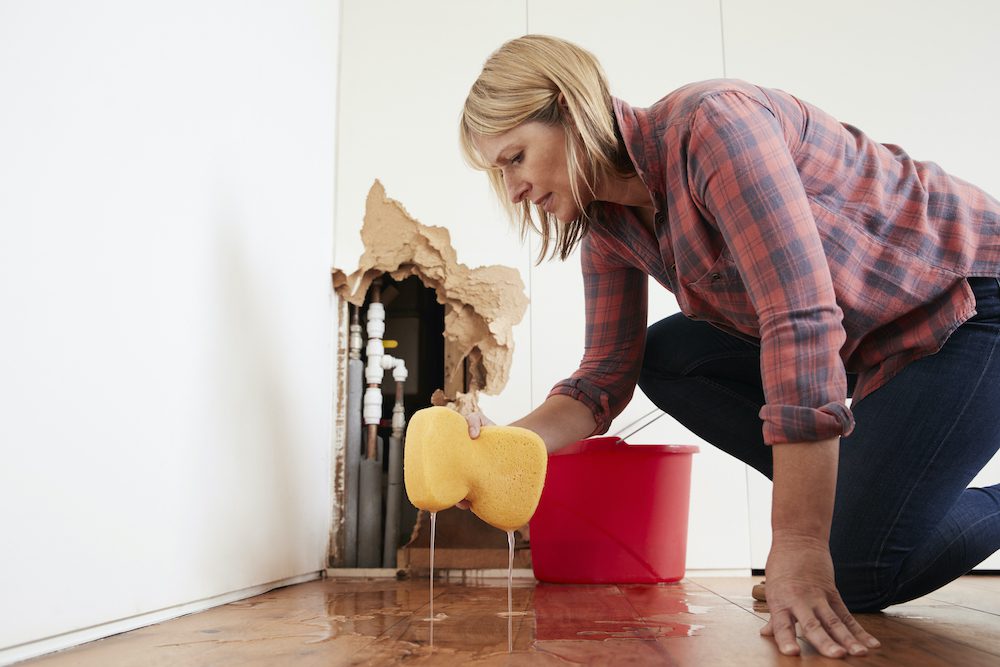Just how do you actually feel about Locating water leaks?

Early detection of leaking water lines can reduce a potential disaster. Some little water leakages might not be visible.
1. Take A Look At the Water Meter
Every home has a water meter. Checking it is a surefire manner in which assists you discover leakages. For starters, turn off all the water resources. Make sure no one will certainly purge, utilize the tap, shower, run the washing machine or dish washer. From there, go to the meter and also watch if it will transform. Because no person is using it, there must be no movements. That shows a fast-moving leakage if it moves. Similarly, if you detect no changes, wait an hour or two as well as examine back once more. This means you may have a slow-moving leak that could even be underground.
2. Examine Water Intake
If you identify abrupt changes, in spite of your usage being the very same, it suggests that you have leaks in your plumbing system. A sudden spike in your bill suggests a fast-moving leakage.
A steady boost every month, even with the same behaviors, reveals you have a slow leakage that's likewise slowly rising. Call a plumber to completely check your building, particularly if you really feel a warm location on your flooring with piping below.
3. Do a Food Coloring Test
When it pertains to water intake, 30% originates from toilets. Examination to see if they are running effectively. Decrease specks of food shade in the storage tank and wait 10 mins. There's a leak between the storage tank and also dish if the shade in some way infiltrates your dish throughout that time without flushing.
4. Asses Outside Lines
Do not fail to remember to inspect your outdoor water lines as well. Test faucets by affixing a yard tube. Must water seep out of the link, you have a loose rubber gasket. Replace this as well as guarantee all links are limited. If you have actually got an automatic sprinkler, it will aid get it skillfully examined and also maintained every year. One little leakage can waste tons of water as well as surge your water costs.
5. Assess the situation and check
House owners must make it a routine to check under the sink counters and also inside closets for any kind of bad odor or mold development. These two warnings suggest a leakage so timely interest is required. Doing regular assessments, even bi-annually, can save you from a significant problem.
If you know your house is currently old, maintain a careful eye on your heaters, hose pipes, pipes etc. Look for stainings as well as weakening as many pipelines and also devices have a life span. They will certainly likewise naturally weaken because of tear as well as use. If you think leaking water lines in your plumbing system, do not wait on it to rise. Call a specialist plumber today so you don't end up with a dreadful mess in your house.
Early discovery of leaking water lines can reduce a prospective calamity. Some little water leaks may not be visible. Checking it is a guaranteed method that assists you find leakages. One tiny leakage can lose bunches of water as well as spike your water expense.
If you believe dripping water lines in your plumbing system, don't wait for it to rise.
How to Know If Your Home Has a Hidden Leak
Water Meter Reveals Inexplicable Water Usage
If you’d like to test whether or not there’s a leak somewhere in your home, you can do this using your water meter. Here is how to conduct the test:
Don’t use any water in your home for at least 30 minutes; this also means not turning on faucets or water-using appliances.
Go outside, and check your water meter for activity.
If your water meter shows that there was activity, even though no one was using any water, this proves that there is a leak in your home.Visible Mold or Mildew Growth
Leaks behind walls create moist, dark environments that allow mold and mildew to grow and thrive. Eventually, you might see mold growth forming on the wall closest to a hidden leak.
If mold is growing in an area that receives a high amount of moisture, such as a bathroom, it may simply be an indication that better ventilation is needed. However, if you see mold growth on a wall or the ceiling in an area where you would not expect, you probably have a hidden leak.
Musty, Mildew Odor
Sometimes you might not be able to see the mold or mildew that is growing as a result of a leak. However, the smell can give the problem away just as easily. If you catch a whiff of something musty, there’s a good chance that old water is collecting somewhere in your home that you can’t see.
Stained/Warped Walls, Ceilings, or Floors
When your home soaks up water, a variety of red flags can become visible, including ceiling stains, bubbling drywall, warped walls, and sagging floors. While these issues can be caused by excess humidity, they can also be signs that a pipe or plumbing connection has started leaking behind your walls.
Inexplicably High Water Bill
After a while, you get a general sense for what your water bill should be. If you own a pool or sprinkler system, your bill will tend to be higher during summer. However, if you receive a water bill that seems especially high, and you can’t figure out what caused it, then you may have a hidden leak somewhere that’s increasing your bill.
https://www.plumbingjoint.com/blog/2019/july/how-to-know-if-your-home-has-a-hidden-leak/

I was shown that write-up on Detecting hidden plumbing leaks through a good friend on our other web blog. Are you aware of someone else who is interested by the subject? Please feel free to promote it. I enjoy reading our article about Finding hidden leaks.